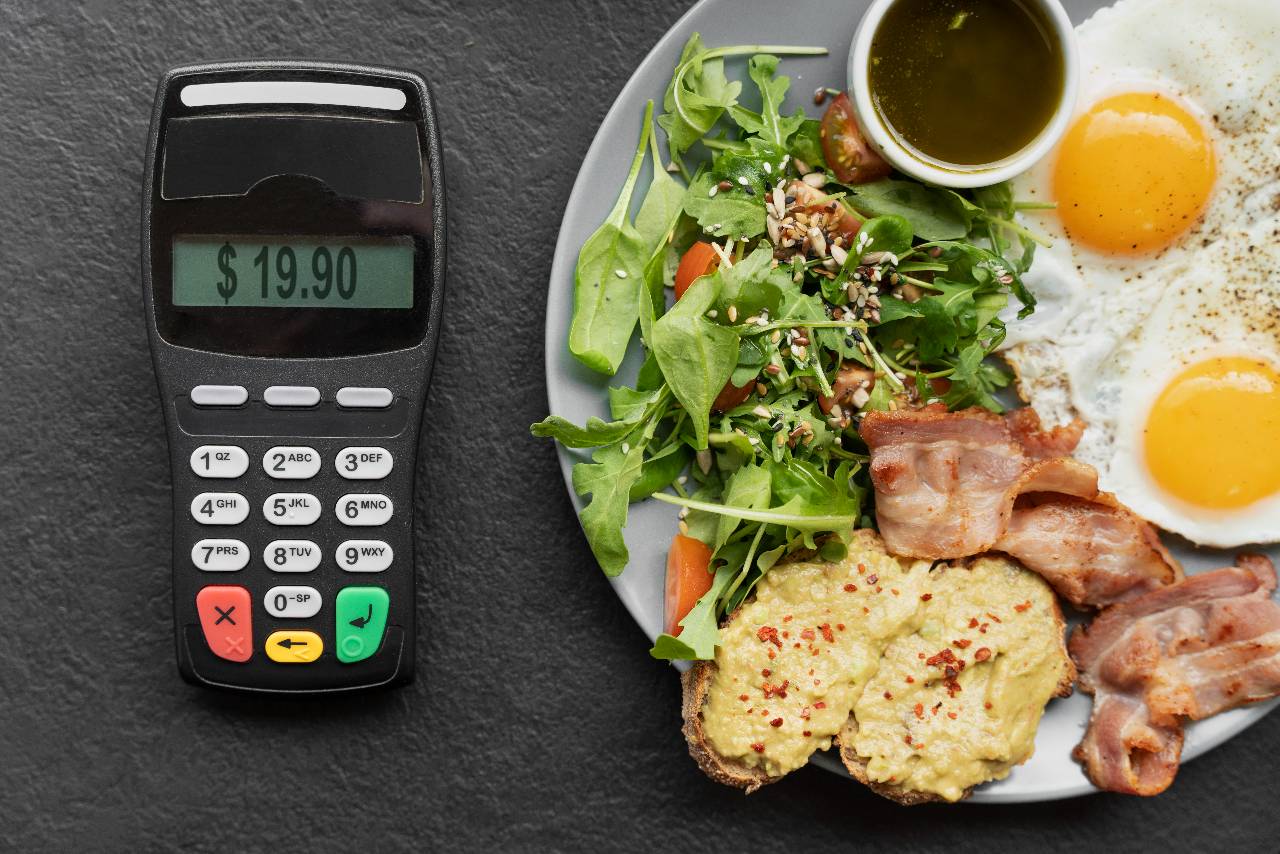How to Price Restaurant Menu Items
Discover how to price menu items for profit by combining accurate food costs, smart strategy, and customer psychology in your restaurant.

Overview
Pricing your menu items can feel tricky. If your prices are too high, customers may look elsewhere. If they're too low, your profit can quickly disappear. Finding the right balance is what keeps your restaurant healthy and your guests happy.
Every dish you serve costs more than just ingredients. There's rent, staff, utilities, and the time and care that go into every plate. When prices don't reflect all those factors, even a busy restaurant can lose money. That's why learning how to price your menu properly is so important.

Know Your True Food Cost
Before setting any menu prices, you need to know exactly how much each dish costs you to make. This is your food cost, and it's the foundation of every pricing decision. Many restaurant owners make the mistake of guessing or using rough estimates, but that can lead to lost profits over time. A few cents off on each plate may not seem like much, but across hundreds of meals each week, it adds up fast.
Start by calculating the cost of every ingredient in a dish. Break it down by portion - if you use 4 ounces of chicken, 2 ounces of rice, and a few vegetables, list the exact cost of each based on your supplier prices. Add these together to find your total plate cost.
Once you have that number, use this simple formula to find your food cost percentage -
Food Cost % = (Cost of Item / Selling Price) x 100
Most restaurants aim for a food cost percentage between 28% and 35%. This means if a dish costs you $4 to make, you'd typically price it between $11 and $14 to maintain a healthy profit.
However, remember that food cost isn't just about ingredients. Include sauces, garnishes, condiments, and even cooking oil - it all counts. Use inventory or recipe management tools to track these costs accurately.
Knowing your true food cost gives you control. It takes guesswork out of pricing, helps prevent undercharging, and ensures that every dish contributes to your bottom line.
Calculate the Ideal Menu Price Using Data
Once you've figured out your true food cost, the next step is setting a menu price that earns a fair profit while keeping customers comfortable with what they're paying. This is where data - not gut instinct - makes all the difference.
Start by deciding on your target food cost percentage. As mentioned before, most restaurants aim for 28-35%. Use this simple formula to find your ideal menu price-
Menu Price = Item Cost / Target Food Cost %
For example, if your total plate cost is $4 and your target food cost is 30%, divide $4 by 0.30. The result - $13.33 - gives you a solid starting point for your menu price. You can round it up or down slightly depending on your market and the perceived value of the dish.
However, pricing shouldn't stop there. Always review your competitors' pricing to make sure you're staying within a reasonable range for your area. If your restaurant offers a unique experience or higher-quality ingredients, a slightly higher price can be justified.
It's also smart to update your prices when ingredient costs change. If your supplier increases the cost of a main ingredient, adjust the selling price to protect your margin.
Finally, use POS data to monitor how customers respond to price changes. If sales drop after an increase, it might be worth fine-tuning. The goal is to use real data - costs, sales, and customer response - to find that sweet spot where profitability meets satisfaction.
Factor in Overhead and Labor Costs
While food cost is the foundation of pricing, it's not the whole picture. Every dish you serve also carries a share of your overhead and labor costs - the behind-the-scenes expenses that keep your restaurant running. Ignoring these can make your menu look profitable on paper but leave you struggling to cover your bills.
Overhead costs include rent, utilities, insurance, marketing, equipment maintenance, and even cleaning supplies. These are fixed expenses that don't change much day to day, but they still need to be factored into every sale. To do this, calculate your total monthly overhead and divide it by your average number of guests or sales for that same month. This gives you an estimate of how much overhead each dish should carry.
Next, add labor costs - your staff's wages, benefits, and taxes. Labor often makes up 25-35% of total revenue, so it's just as important as your food cost. If you sell a $12 dish and your food cost is $4, you still need to ensure that the remaining $8 helps pay for staff and other expenses while leaving room for profit.
Some owners find it helpful to combine all expenses into a total cost percentage, which includes food, labor, and overhead. This gives a more realistic view of what it takes to run the business.
When you factor in these costs correctly, your prices reflect the true effort and resources that go into every plate - not just the ingredients. It's a key step toward sustainable profits and long-term success.

Understand Perceived Value and Customer Psychology
Even with the right food cost and profit margin, your prices won't work if customers don't feel they're getting good value. Pricing isn't just about numbers - it's also about perception. How guests view the quality, presentation, and overall experience of your food plays a huge role in how much they're willing to pay.
Start by thinking about what your restaurant represents. Are you casual and family-friendly, or more upscale and experiential? Guests expect different price ranges depending on the atmosphere. A burger priced at $15 may feel high at a diner but fair in a trendy bistro with table service and fresh ingredients.
Next, use psychological pricing to make prices more appealing. For example, $9.95 often feels noticeably cheaper than $10.00, even though the difference is only five cents. Similarly, avoid using dollar signs on menus - studies show they remind people they're spending money.
Placement also matters. Put high-profit items in areas where eyes naturally go first, such as the top-right corner of the menu. Use descriptions that highlight quality and freshness - "hand-cut fries" or "locally sourced salmon" - to justify slightly higher prices.
Finally, test how small adjustments affect sales. If a price increase doesn't impact orders, you've likely found your sweet spot. When customers feel they're getting real value for what they pay, they won't just accept your prices - they'll return for more.
Analyze Local Competition and Market Position
Understanding your local market is key to setting prices that make sense for both your customers and your business. Here's how to do it step by step -
1. Research Similar Restaurants
Start by identifying restaurants in your area that serve similar food or attract the same type of guests. Look at their menu prices, portion sizes, presentation, and overall experience. Pay attention to whether they focus on value pricing or premium dining. This gives you a clear view of what customers are used to paying.
2. Define Your Market Position
Once you know your competitors' price ranges, decide where your restaurant fits. Are you offering quick, casual meals or a higher-end experience? If you use high-quality ingredients, provide table service, or offer unique dishes, you can confidently price a bit higher. If your model depends on fast turnover and affordability, staying competitive on price is crucial.
3. Compare Both In-House and Online Pricing
Today's customers often check menus online before visiting. Make sure your prices are consistent across your website, delivery apps, and printed menus. Mismatched pricing can cause confusion or mistrust.
4. Focus on Value, Not Just Price
Don't feel pressured to undercut competitors. Instead, emphasize what makes you different - better flavor, fresher ingredients, or friendlier service. Customers will pay more if they understand the value you provide.
By analyzing competition carefully, you position your restaurant strategically - staying competitive without sacrificing your profit margins.
Monitor Performance and Adjust Regularly
Pricing isn't something you do once and forget about. The restaurant industry changes constantly - ingredient costs rise, customer preferences shift, and new competitors open nearby. To stay profitable, you need to review your menu prices regularly and make adjustments based on real performance data.
1. Track Menu Item Sales and Profit Margins
Use your POS system to monitor which dishes sell best and which lag behind. Compare each item's sales volume to its profit margin. Some high-sellers may bring in little profit, while others contribute significantly. Identify your "stars" (popular and profitable items) and dogs (low sales, low profit) to decide where to adjust prices or recipes.
2. Review Food and Labor Costs Monthly
Ingredient and wage costs fluctuate often. Review invoices and labor reports at least once a month. If your costs rise but prices stay the same, your margins will shrink. Adjust prices slightly to reflect those changes before they become major losses.
3. Test Small Adjustments
Avoid big jumps in price that might surprise customers. Instead, test gradual increases of 3-5% on select items and watch how customers respond. Often, guests won't notice small changes if the value feels consistent.
4. Use Data to Drive Decisions
Keep a pricing log or dashboard to record when and why you change prices. Over time, you'll see patterns - seasonal ingredient changes, shifts in customer demand, or effects of local competition.
Regular review and data-driven adjustments keep your pricing strategy strong, your profits stable, and your customers satisfied.
Profit with Purpose
Pricing your menu isn't just about covering costs or chasing higher profits - it's about building a sustainable business that rewards your hard work and keeps customers coming back. The right pricing strategy allows you to pay your team fairly, manage rising expenses, and still deliver the quality and value your guests expect.
When you take the time to calculate food costs, include overhead, and understand customer psychology, you move from guessing to making informed decisions. That's what separates thriving restaurants from those constantly struggling to stay afloat. Every dollar on your menu should have a purpose, reflecting not only your expenses but also the effort, creativity, and care that go into every plate you serve.
Remember, profitability doesn't mean overcharging - it means charging fairly and consistently for the experience you provide. Guests don't mind paying a little more when they feel they're getting real value. Clear communication, steady quality, and transparent pricing help build that trust over time.
Keep reviewing your menu regularly, track performance, and make small adjustments when needed. Pricing is never a one-time task; it's an ongoing process that keeps your restaurant strong, adaptable, and ready for whatever comes next.